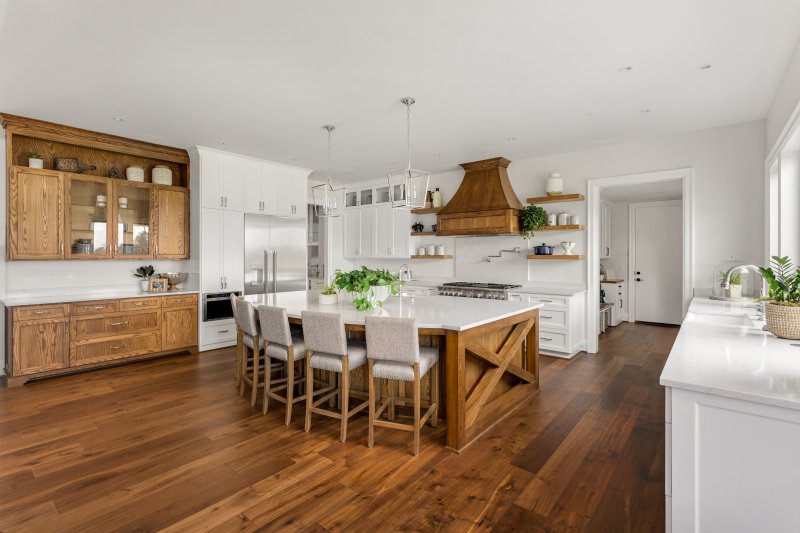
When building or remodeling a home, countless decisions must be made. From the architectural design to the color of the interior baseboards and everything in between, it can be a tedious process for anyone. However, many homeowners find that one of the most pivotal choices in determining whether wood or tile flooring is best. Both are highly popular, especially when renovating or building a kitchen, bathroom, or living area within a home. Keep reading to discover the pros, cons, and price differences between these two so that you can make a more well-informed decision about your home’s flooring.
Wood vs. Tile Pros & Cons
There are so many beautiful options to choose from when deciding between wood or tile floors. With several variations in style, pattern, and color, the selections are endless. But to help you narrow down those you like most, it’s important that you weigh the pros and cons of each material:
Pros & Cons of Wood
- There is the option to choose solid wood, which is a single plank, or engineered wood, which has several layers and is often more affordable.
- Wood can appear warm and elegant, and it’s known to help increase the value of a home.
- It retains warmth quite well, allowing for cozier areas of your home, especially during cold winter months.
- Scratches may occur on wood floors, depending on the type you choose.
- Wood is also more susceptible to water damage, so you may want to rethink the idea of laying it in your bathroom.
- The lifespan of a quality wood floor can be a lifetime, but it does require maintenance on your way. Refinishing them over the years is to be expected, and solid wood is likely to last much longer than engineered wood (the potential of a lifetime versus 20-30 years).
Pros & Cons of Tile
- Tile is highly versatile, so you can customize it based on your preferred size, shape, and shade.
- Tile is viewed as being much colder to walk on and is often harder on feet, so it can be a less comfortable option if used in predominant places within your home.
- Tile is highly durable and water resistant, but because most tile has grout lines, they can become visibly dirty over time, resulting in regular upkeep.
- If you should drop something on your tile floors, it can cause a chip or crack to occur; however, single tile replacement is possible.
- Tile has a lifespan that ranges between 20-50 years. This is dependent on the type of tile you choose, as some last longer than others (slate and granite will outlast ceramic or porcelain).
What is the Cost Difference Between Wood and Tile?
If you are looking for a more cost-friendly approach to your remodel or build, the short answer is that it depends on how much you need and the complexity of the material you plan to use.
For example, wood can range from $6-$30+ per square foot. This is a vast spread because of the factors that must be considered (i.e., the type of wood used and the square footage of the area).
The same can be said for tile in that the range of cost can be as low as $2 or as high as $65 per square foot! Naturally, stone and other natural options will be costlier as opposed to ceramic or porcelain.
It’s important to do your research when choosing between wood or tile. Both can be beautiful additions to your home, so think about what it is you really want and what your budget can afford.
About Prestige Floors
Prestige Floors is a small, family-owned and operated business based in Keller. As a husband-and-wife team, Benson and Ashley Kelly have been improving and transforming the homes of Keller residents and its surrounding communities since 2006. With years of experience and an eye for design, their team is trusted, bonded, and offers only the very best flooring for eager homeowners. If you are interested in replacing your floors or remodeling your home, contact us at (817) 422-5343 to schedule a FREE in-home estimate.
